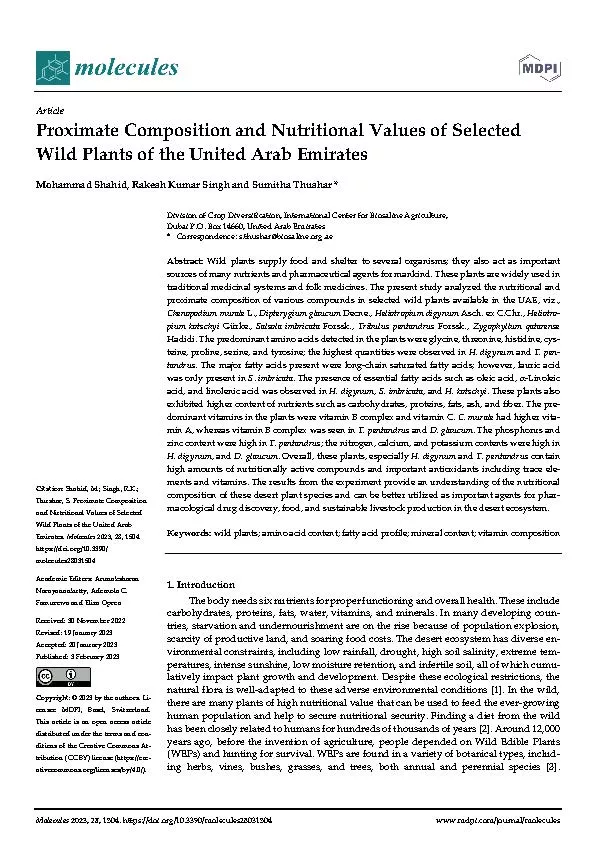Proximate Composition and Nutritional Values of Selected Wild Plants of the United Arab Emirates
Wild plants supply food and shelter to several organisms; they also act as important sources of many nutrients and pharmaceutical agents for mankind. These plants are widely used in traditional medicinal systems and folk medicines. The present study analyzed the nutritional and proximate composition of various compounds in selected wild plants available in the UAE, viz., Chenopodium murale L., Dipterygium glaucum Decne., Heliotropium digynum Asch. ex C.Chr., Heliotropium kotschyi Gürke., Salsola imbricata Forssk., Tribulus pentandrus Forssk., Zygophyllum qatarense Hadidi. The predominant amino acids detected in the plants were glycine, threonine, histidine, cysteine, proline, serine, and tyrosine; the highest quantities were observed in H. digynum and T. pentandrus.
The major fatty acids present were long-chain saturated fatty acids; however, lauric acid was only present in S. imbricata. The presence of essential fatty acids such as oleic acid, α-Linoleic acid, and linolenic acid was observed in H. digynum, S. imbricata, and H. kotschyi. These plants also exhibited higher content of nutrients such as carbohydrates, proteins, fats, ash, and fiber. The predominant vitamins in the plants were vitamin B complex and vitamin C. C. murale had higher vitamin A, whereas vitamin B complex was seen in T. pentandrus and D. glaucum. The phosphorus and zinc content were high in T. pentandrus; the nitrogen, calcium, and potassium contents were high in H. digynum, and D. glaucum. Overall, these plants, especially H. digynum and T. pentandrus contain high amounts of nutritionally active compounds and important antioxidants including trace elements and vitamins. The results from the experiment provide an understanding of the nutritional composition of these desert plant species and can be better utilized as important agents for pharmacological drug discovery, food, and sustainable livestock production in the desert ecosystem.
Year
2023
Publication Source
MDPI: Molecules
Publication type
Scientific Paper
Volume/Chapter/Issue
28











